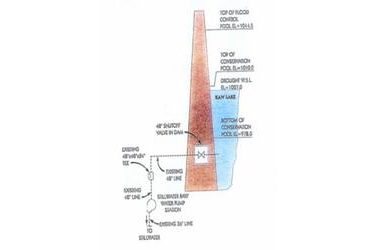Kaw Lake Facts
Ponca City Now - June 2, 2016 10:08 am

By Beverly Bryant/News Director
Groundbreaking for Kaw Lake was 50 years ago, and the lake opened in 1976, 40 years ago, storing water from the Arkansas River.
Like many reservoirs built in Oklahoma, Kaw Lake has several functions. First and foremost, the dam and lake were built as a means of flood control downstream.
It also was intended to serve as a water supply, and several communities have water rights to use the lake, though only Stillwater currently uses the lake as its municipal water supply.
Fish and wildlife, along with recreation, are other major functions of the lake, as is hydropower generation.
The Kaw Hydroelectric Plant is located near Ponca City, Oklahoma. It was declared commercial on Sept. 26, 1989. The 29-megawatt plant is owned and operated by the Oklahoma Municipal Power Authority. Ponca City is one of 41 member cities which buys electric power from OMPA. In a typical year almost 14 percent of OMPA’s energy resources are supplied by water.
Kaw Lake and Dam are operated by the U.S. Army Corps of Engineers, which must always be aware of the multiple functions of the lake. This balancing act requires that the lake will always be maintained at a level to support both fish and wildlife, as well as recreation.
So what are the physical characteristics of Kaw Lake?
- The streambed elevation is 931.50 feet.
- The top of the dam elevation is 1056.50 feet.
- All storages are based on a contributing drainage area of 38,771 square miles.
- The total drainage area for the lake is 46,345 square miles (including upstream projects).
- The Longitude: 96° 55′ 18" Latitude: 36° 41′ 58"
The lake itself has different layers. The very top section is the top of the flood control section. It is at 1,044.5 feet above sea level. The next layer is the conservation pool, which is between 978 feet and 1,010 feet.
Right now there is one 48-inch shutoff valve in the dam which is co-owned by Stillwater and Ponca City. Stillwater uses the valve which sends water through a 48-inch line to a tee, then on to the Stillwater raw water pump station. From there it moves through a 36-inch line to Stillwater for its municipal water supply.
As of Wednesday, June 1, the lake was at 1018.9 feet and water was being discharged through the dam at a rate of 11,285 cubic feet per second.



